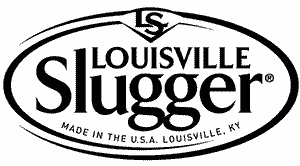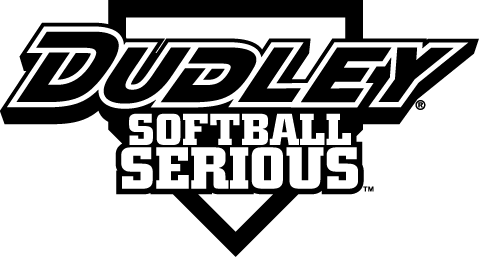Message board »Message Board home »Sign-in or register to get started
Online now: 1 member: TABLE SETTER 11; 127 anonymousDiscussion: Can't sleep
| Posted | Discussion |
| March 23, 2020 HAT MAN Men's 50 229 posts | Can't sleep I can't sleep and figured I would ask you all for a ruling. 1 of my umpires had this happen and didn't know when to make the call. THIS IS NOT A WHAT IF this happened lol. 1 out man on 3rd. Fly ball to left field that was caught. Runner on 3rd left way early and crossed the commitment line but stopped before scoring line because his team was yelling go back, during the yelling runner finished crossing scoring line. 3rd baseman had the ball standing on 3rd saying he never tagged. As the ump you make the 2nd out call on the catch but what do you do next? 1. Say nothing and allow the play to finish? 2. Call runner out as he can't go back to tag since he already crossed commitment line? 3. A variation of something else? Looking to see if I guided my umpire correctly. Vinny |
| March 23, 2020 B-DUB Men's 65 30 posts | Runner is out on appeal only. pretend no commitment line. ump waits for appeal.. runner would also be out after crossing commitment line if runner went back. |
| March 23, 2020 B.J. 1105 posts | the answer is #1.. this is a live ball and no call should be made until the appeal is made at 3rd base... and as B-DUB stated if the runner crossed back over the CL going back to 3rd he should be called out immediately |
| March 23, 2020 DaveDowell Men's 70 4312 posts | A few quick observations ... • Three correct answers so far, prior to commencement of the "what if" and "but, but but, but" fact pattern tweaking ... Well done .. Sleep well, Vinny!; • The Appeal, when made, should be a very simple and non-debatable call; and • Sometimes the R3 will realize after crossing the C/L that the catch was made and he has a tag-up requirement ... It's been argued more than once that the C/L rule doesn't apply because he is "required" to tag up and, accordingly, he should be allowed to do so ... That ignores, of course, who made the bonehead play of finding himself trapped on the wrong side of the C/L! ... The competent umpire in that circumstance still has a double play, with a catch and C/L violation ... |
| March 23, 2020 stick8 1991 posts | Hat Man going by your description: I’d wait until the play is finished. When the third baseman had the ball standing on the bag and yelled out “ump,runner left third early” and if I witnessed that he did, I’d have an out. It’s a live ball situation. |
| March 23, 2020 B.J. 1105 posts | Hmmm.... competent umpire I guess we know who that leaves out Sorry Dave couldn’t resist |
| March 23, 2020 HAT MAN Men's 50 229 posts | Thanks all. Is it a live ball appeal? Or dead ball appeal? Is the umpire calling r3 safe when he crosses the scoring line? Or does he stay quiet and wait until appeal is made and bag is touched? I was correct with letting play out but I also want my umps doing it the right way. |
| March 23, 2020 DaveDowell Men's 70 4312 posts | That's OK, B.J. ... It wasn't an accident I used the phrase "...prior to commencement of the 'what if' and 'but, but but, but' fact pattern tweaking..." in my response ... |
| March 23, 2020 B.J. 1105 posts | Hatman... it can be either... when runner scores there is no actual safe or out call... he just scores... when defense makes the proper appeal then you rule the runner safe or out |
| March 23, 2020 stick8 1991 posts | Hat Man your scenario is a live ball situation. When the runner crosses the scoring line or touches the second plate the umpire does not make a call. A dead ball appeal would be after the ump called “time”. The play is over and you have to wait until the next batter in the order is up. Before the first pitch the defense appeals to the ump that the runner left third early. Then the ump makes the call. If you don’t appeal before the first pitch to the next batter you cannot appeal the play. |
| March 23, 2020 k man Men's 65 326 posts | Sorry Dave, but I have a what if to add on to this example. Same situation as above, but say the relay comes in to the infield and the throw that was going to third get past the 3b and into the dugout. Dead ball and runners advance so does the runner who tagged up early automatically score or can the defense still challenge the runner for leaving early successfully. |
| March 23, 2020 B.J. 1105 posts | k man... the ball going into the dugout has no effect on the runner not tagging/leaving early.. once the ball is retrieved the defense can make the appeal .. also the ball doesn't actually have to be thrown to a base that is being appealed .. once the ball comes into the infield and play had stopped the defense can specify the runner and base they wish to appeal on the runner leaving early |
| March 24, 2020 Wayne 37 Men's 65 773 posts | Why does a ball that goes dead have to be brought back into the field for an appeal to be made? If the ball is in dead ball territory, get a shovel and bury it you incompetent %$#@*&. Sorry, Dave, couldn't resist. Runners must legally complete their baserunning requirements. However, since the runner crossed the C/L he cannot go go back and correct their error. Also, after a ball goes dead, runners can correct their their baserunning mistakes, but they have to touch the bases in reverse order after the reward. EXAMPLE: Batter hits a deep flyball. Runner on first takes off thinking the ball won't be caught. Fielder makes the catch but in their haste to double runner off first they throw the ball out of play. Umpire awards runner 3rd base. Runner must still retouch first. By not doing so, defense can still appeal that the runner left early. A runner cannot return to a base they missed when a throw goes dead if they aquired the preceding base legally.(This is another situation though.) Missed bases are another animal. That being said, a fielder cannot throw, kick etc. A ball into an out of play area to keep a runner from legally returning to touch a missed base. |
| March 25, 2020 stick8 1991 posts | BJ, where you stated that the ball is retrieved from the dugout (dead ball territory) and is put back in the infield is when an appeal can be made, I’m not certain that’s entirely correct. If I’m umpiring and k mans scenario plays out as he describes it 1) I have a dead ball 2) I move the runners up accordingly—in this case the throw from the outfield two bases from the time of the throw. Runner at third scores. Now if someone is retrieving the ball I will always make sure to examine that ball for any damage when it’s thrown in. In the interim sometimes the pitcher will casually ask if a certain runner left early. I will tell them you have to wait until the next batter comes up and make your appeal before the first pitch. I’m thinking that’s what you meant to say. That’s the way l learned it. |
| March 25, 2020 B.J. 1105 posts | stick... as far as the ball getting passed an infielder and going into the dugout usually if that happens you have the defense trying to run it down and entering the dugout area.. but no the ball doesn't have to be retrieved once it enters the dugout or if it is thrown over a fence.. it's still a dead ball and an appeal can be made by the defense once all play has stopped ... the defense also doesn't have to wait until the next batter comes up and before the first pitch ... as soon as the runner on 3rd passed the scoring line/plate and with it still being a dead ball situation the defense can make the appeal at that time also the runner on 3rd does not score because he left before 1st touch and crossed the CL and cannot return to tag |
| March 25, 2020 DaveDowell Men's 70 4312 posts | OK, that's enough of this one ... Thanks, everyone ... ** THREAD CLOSED ** |














